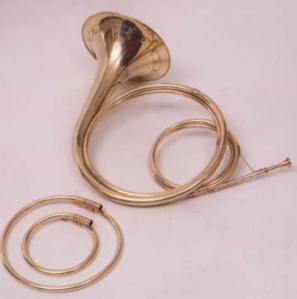Tags
Boulder Bach Festival, Brandenburg Concerto no. 1 in F Major, Cöthen, clarino, cors de chasse, Dresden, embouchure, hand-stopping, harmonic series, Horace Fitzpatrick, horn, hunting horn, Leipzig, natural horn, nodal venting, performance practice, Richard Seraphinoff, terminal crook, valves

Moritzburg Castle near Dresden
Bach’s Brandenburg Concerto no. 1 in F Major (BWV 1046) will be performed at the 3 March 2012 Finale Concert of the Boulder Bach Festival at 7:30pm at Mountain View Methodist Church in Boulder.
The Concerto opens with a fanfare that Horace Fitzpatrick has traced to a Saxon hunting horn call from the early eighteenth century. The strident cors de chasse used in the hunt were usually pitched in D and were wound in large, single hoops that could be worn diagonally across the hunters’ chests while on horseback, but Bach composed the Concerto for a pair of shorter, more tightly wound orchestral horns of either a fixed length that always sounded in the key of F or were fitted with terminal crooks that allowed them to be pitched in a variety of keys.
Both of those types of horns could have easily played both the hunting and Bach fanfares as they call for only a few of the lower notes of the harmonic series that coincide with a major triad, but in the Concerto, Bach quickly abandons the simple vocabulary of the hunt and requires the hornists to take up the higher clarino register of the natural instrument that includes pitches of the harmonic series that only approximate a diatonic scale. In performances by orchestras that play modern instruments, these approximations are all but eliminated by employing pitch-altering devices (i.e., “valves”) that were grafted onto the natural instrument in the nineteenth century, but orchestras performing music of the eighteenth century on period instruments must take care to avoid a suspect performance practice that might be visually appealing but is historically implausible.

Horn after J. W. Haas by Seraphinoff
Iconography of Bach’s day typically shows orchestral players holding their bells upright, but Baroque horn builder Richard Seraphinoff notes that “questions arise when playing Bach’s horn parts. There are so many non-harmonic series notes in Bach that one might think that players must have had some method of altering the pitch of the open overtones other than bending the notes with the embouchure.” The codification of hand-stopping has traditionally been attributed to a Dresden hornist shortly after 1750, but Seraphinoff encourages us to “give the players of the period the benefit of the doubt and assume that they were clever enough to try the experiment of putting the hand in the bell to correct intonation when asked by a conductor or violinist or oboist to ‘please do something about those out of tune notes,’ a request that was probably made more than once in the early part of the eighteenth century. Job security has always been the mother of invention.”
Therefore, when performing Bach’s horn parts on period instruments, the twentieth-century application of nodal venting, an entirely non-historical disfiguration of the Baroque horn that allows it to be played in tune with the bell upright, is much less appropriate than the technique of hand-stopping, a practice that is likely to have been embraced by hornists living only a short distance from Cöthen and Leipzig during Bach’s lifetime.

Pingback: After Three Centuries, Sheep Can Still Safely Graze |